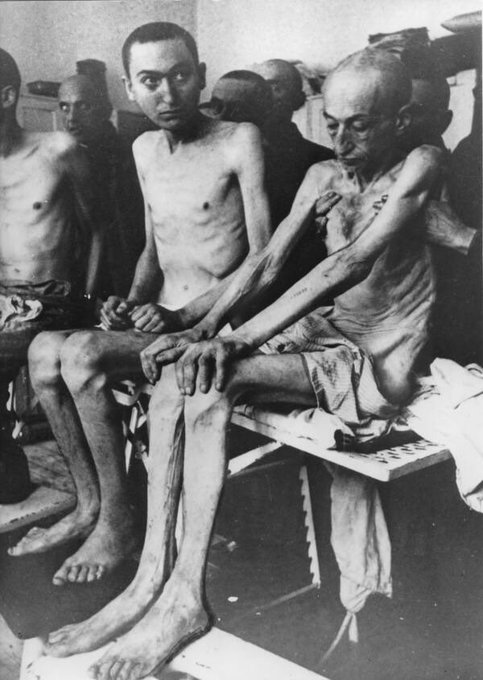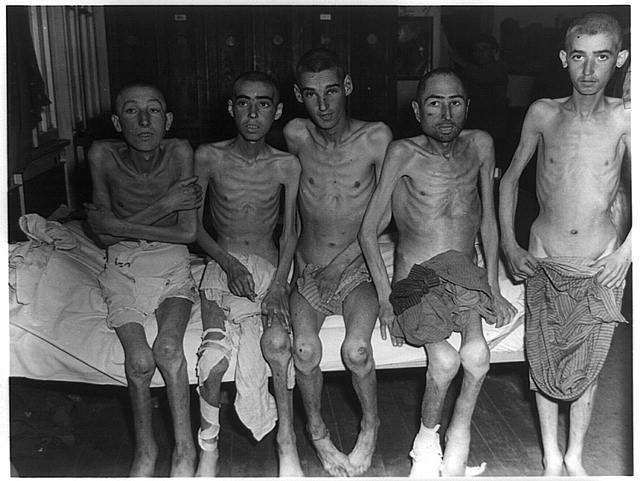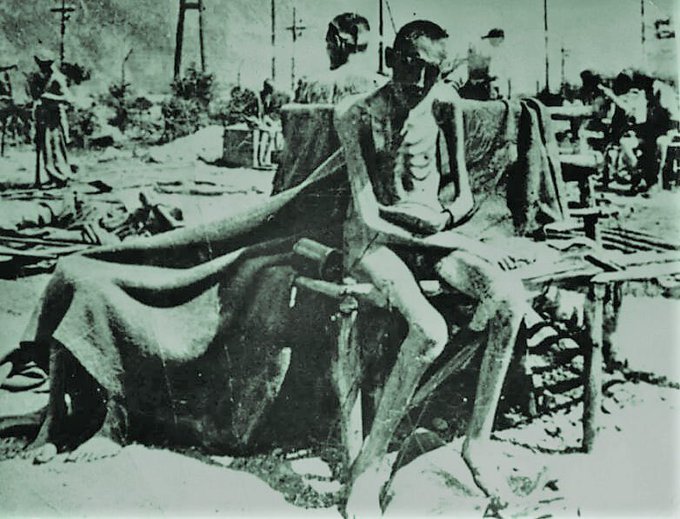🧵🧵A Mayor for Gaza, in the City of Jews🧵🧵
Thread: There is something extremely alarming happening in New York right now.
Zohran Mamdani is running, and according to expectations, he could become the next mayor of a city that holds the largest Jewish population outside of Israel.
Yet somehow, his campaign has made his hatred toward Israel one of its defining features.
It almost feels as if he is running for mayor of Gaza, not New York. Because how else do you explain making your central message one that alienates nearly a million Jews in your own city?
But, this is actually a test of memory.
Because New York’s Jewish history is about survival.
Every street in this city carries a piece of Jewish endurance.
Every building, every synagogue, every school was built by people who rebuilt themselves.
Generation after generation, Jews came here with nothing and started again while the rest of the world looked away from their suffering.
To understand how serious this is, you have to understand what New York has meant to the Jewish people for more than three hundred years.
Thread: There is something extremely alarming happening in New York right now.
Zohran Mamdani is running, and according to expectations, he could become the next mayor of a city that holds the largest Jewish population outside of Israel.
Yet somehow, his campaign has made his hatred toward Israel one of its defining features.
It almost feels as if he is running for mayor of Gaza, not New York. Because how else do you explain making your central message one that alienates nearly a million Jews in your own city?
But, this is actually a test of memory.
Because New York’s Jewish history is about survival.
Every street in this city carries a piece of Jewish endurance.
Every building, every synagogue, every school was built by people who rebuilt themselves.
Generation after generation, Jews came here with nothing and started again while the rest of the world looked away from their suffering.
To understand how serious this is, you have to understand what New York has meant to the Jewish people for more than three hundred years.

Part I: The Beginning of a New World.
The Jewish story in New York begins in 1654. Twenty-three refugees arrived from Brazil, Portuguese Jews who had already fled the Inquisition once and were now running again, this time from forced conversion under Dutch rule.
When they landed in New Amsterdam, they met Governor Peter Stuyvesant, who tried to kick them out. He called Jews deceitful and unwelcome. But the Jewish settlers fought back and won. They stayed, built a small synagogue, and formed Shearith Israel, the first Jewish congregation in North America.
It was a humble beginning, but it set the pattern for everything that followed: resistance, survival, and faith in a place that was not sure it wanted them.
For generations afterward, Jews in New York lived quietly. But they stayed. And when the doors of Europe closed, this city became their last open gate.
The Jewish story in New York begins in 1654. Twenty-three refugees arrived from Brazil, Portuguese Jews who had already fled the Inquisition once and were now running again, this time from forced conversion under Dutch rule.
When they landed in New Amsterdam, they met Governor Peter Stuyvesant, who tried to kick them out. He called Jews deceitful and unwelcome. But the Jewish settlers fought back and won. They stayed, built a small synagogue, and formed Shearith Israel, the first Jewish congregation in North America.
It was a humble beginning, but it set the pattern for everything that followed: resistance, survival, and faith in a place that was not sure it wanted them.
For generations afterward, Jews in New York lived quietly. But they stayed. And when the doors of Europe closed, this city became their last open gate.

Part 2: The Flood of Souls.
Between 1880 and 1920, more than two million Jews arrived in America, and most came through New York. They came from Poland, Lithuania, Ukraine, Galicia, and Russia, from towns where their synagogues had been burned and their children spat on.
They settled in the Lower East Side, one of the most overcrowded neighborhoods on earth. Ten people to a room. Beds rented by the hour. Kids working in garment factories. Mothers sewing late into the night. But even in that poverty, there was something precious they had never known before: safety.
In the Lower East Side, a Jew could walk freely wearing a yarmulke. He could open a Yiddish newspaper, build a synagogue, start a union. The streets buzzed with Jewish life, with the hum of sewing machines and the sound of Hebrew prayers.
Yes, it was poor and chaotic, but alive. Out of that poverty came strength, community, and identity. The kind of identity that would carry Jews through the darkest century ahead.
Between 1880 and 1920, more than two million Jews arrived in America, and most came through New York. They came from Poland, Lithuania, Ukraine, Galicia, and Russia, from towns where their synagogues had been burned and their children spat on.
They settled in the Lower East Side, one of the most overcrowded neighborhoods on earth. Ten people to a room. Beds rented by the hour. Kids working in garment factories. Mothers sewing late into the night. But even in that poverty, there was something precious they had never known before: safety.
In the Lower East Side, a Jew could walk freely wearing a yarmulke. He could open a Yiddish newspaper, build a synagogue, start a union. The streets buzzed with Jewish life, with the hum of sewing machines and the sound of Hebrew prayers.
Yes, it was poor and chaotic, but alive. Out of that poverty came strength, community, and identity. The kind of identity that would carry Jews through the darkest century ahead.

Part 3: When the World Went Dark
Then came the 1930s. The news from Europe got darker each month. Synagogues were destroyed, entire families disappeared, and entire towns wiped out. Jews in New York held rallies, wrote letters, and begged the U.S. government to open its doors wider. For the most part, it did not.
The Holocaust took place an ocean away, but New York felt it as if it were next door.
When the survivors began to arrive, they were hollow-eyed and broken, carrying nothing but memories. Brooklyn and the Bronx filled with people who had escaped the camps. You could see the tattooed numbers on their arms at bakeries, in tailor shops, in shuls.
They rebuilt. They married. They had children. They refused to disappear.
If you think “Never Again” was born in Israel, remember this: it was whispered first in small New York apartments, by survivors who looked at their newborns and swore the Jewish people would never die.
Then came the 1930s. The news from Europe got darker each month. Synagogues were destroyed, entire families disappeared, and entire towns wiped out. Jews in New York held rallies, wrote letters, and begged the U.S. government to open its doors wider. For the most part, it did not.
The Holocaust took place an ocean away, but New York felt it as if it were next door.
When the survivors began to arrive, they were hollow-eyed and broken, carrying nothing but memories. Brooklyn and the Bronx filled with people who had escaped the camps. You could see the tattooed numbers on their arms at bakeries, in tailor shops, in shuls.
They rebuilt. They married. They had children. They refused to disappear.
If you think “Never Again” was born in Israel, remember this: it was whispered first in small New York apartments, by survivors who looked at their newborns and swore the Jewish people would never die.

Part 4: A Second Jewish Capital
By the 1950s, New York had become the center of Jewish life in the world. The population climbed above two million. Yiddish theaters, Hebrew schools, kosher delis, and Jewish newspapers filled the streets.
Jewish life touched every part of the city. Rabbis taught in Brooklyn, scholars lectured in Manhattan, activists rallied in Queens. The children of immigrants became doctors, lawyers, teachers, and artists.
Orthodoxy flourished too. While many Jews moved to the suburbs, Hasidic groups rebuilt what Europe had lost. Satmar built it's base in Williamsburg, Chabad in Crown Heights, Bobov and Vizhnitz in Borough Park. They carried their Torahs across generations and raised families that replaced what the Nazis had destroyed.
New York had become the other Jewish capital of the world. One spiritual capital stood in Jerusalem. The other, cultural and vibrant, stood right here on the Hudson.
By the 1950s, New York had become the center of Jewish life in the world. The population climbed above two million. Yiddish theaters, Hebrew schools, kosher delis, and Jewish newspapers filled the streets.
Jewish life touched every part of the city. Rabbis taught in Brooklyn, scholars lectured in Manhattan, activists rallied in Queens. The children of immigrants became doctors, lawyers, teachers, and artists.
Orthodoxy flourished too. While many Jews moved to the suburbs, Hasidic groups rebuilt what Europe had lost. Satmar built it's base in Williamsburg, Chabad in Crown Heights, Bobov and Vizhnitz in Borough Park. They carried their Torahs across generations and raised families that replaced what the Nazis had destroyed.
New York had become the other Jewish capital of the world. One spiritual capital stood in Jerusalem. The other, cultural and vibrant, stood right here on the Hudson.

Part 5: Refuge and Renewal
In the decades that followed, New York became the shelter for Jews from everywhere. When the Soviet Union trapped its Jews behind the Iron Curtain, New York Jews rallied and protested until the gates opened. When they did, tens of thousands came to this city.
Jews from Yemen, Syria, Iran, and Iraq came too, finding in New York what their home countries denied them. Queens filled with Bukharian Jews from Uzbekistan. Syrian Jews built synagogues in Brooklyn. Israelis opened restaurants on the Upper West Side.
The city became a living museum of Jewish survival.
More than 900,000 Jews still live here today. You can walk through New York and find every flavor of Jewish life, Hasidic, Sephardic, Mizrahi, Modern Orthodox, secular, Yiddish-speaking, Hebrew-speaking.
New York did not just protect Jews. It became Jewish itself.
In the decades that followed, New York became the shelter for Jews from everywhere. When the Soviet Union trapped its Jews behind the Iron Curtain, New York Jews rallied and protested until the gates opened. When they did, tens of thousands came to this city.
Jews from Yemen, Syria, Iran, and Iraq came too, finding in New York what their home countries denied them. Queens filled with Bukharian Jews from Uzbekistan. Syrian Jews built synagogues in Brooklyn. Israelis opened restaurants on the Upper West Side.
The city became a living museum of Jewish survival.
More than 900,000 Jews still live here today. You can walk through New York and find every flavor of Jewish life, Hasidic, Sephardic, Mizrahi, Modern Orthodox, secular, Yiddish-speaking, Hebrew-speaking.
New York did not just protect Jews. It became Jewish itself.

Part 6: Memory Carved Into Stone
There are cities that forget, and there are cities that remember.
New York remembers.
At the tip of Manhattan, the Museum of Jewish Heritage faces the Statue of Liberty. Together they tell one story: freedom and memory must live side by side.
Along Riverside Drive stands a memorial to the Six Million, built in 1947 when the pain was still raw. In Brooklyn, schools invite survivors to speak. In synagogues, the names of murdered families are still read aloud.
Every Friday evening, candles are lit in Jewish apartments built by refugees who once had nothing. The city still glows with their faith.
There are cities that forget, and there are cities that remember.
New York remembers.
At the tip of Manhattan, the Museum of Jewish Heritage faces the Statue of Liberty. Together they tell one story: freedom and memory must live side by side.
Along Riverside Drive stands a memorial to the Six Million, built in 1947 when the pain was still raw. In Brooklyn, schools invite survivors to speak. In synagogues, the names of murdered families are still read aloud.
Every Friday evening, candles are lit in Jewish apartments built by refugees who once had nothing. The city still glows with their faith.

Part 7: A Dangerous Forgetting
And now, after all of that history, a man like Zohran Mamdani wants to lead this same city while turning his hatred toward the Jewish state into the center of his campaign.
That choice alone tells you everything. He is not running for mayor of Jerusalem or Gaza. He is running for mayor of New York City, a city with crumbling infrastructure, rising rent, and real problems that actually affect people’s lives. Yet the issue he chose to build his platform around is Israel.
You do not have to love Israel or agree with every move its government makes to see how strange that is. It is one thing to hold an opinion. It is another to make that opinion the loudest part of your identity as a candidate for a city on another continent.
And the message it sends is hard to ignore. When a politician chooses to center his campaign on condemning the Jewish state in a city with nearly a million Jews, it stops being about policy. It becomes a signal, one that says Jewish pride, Jewish connection, and Jewish survival are fair game for attack.
And no, this is not about criticism at all. It's about the fixation. And about making the one Jewish state in the world the villain in every story, and pretending that doing so makes you brave or progressive.
Even people who have real disagreements with Israel understand that doing this, turning it into the centerpiece of a mayoral campaign, crosses a line.
And now, after all of that history, a man like Zohran Mamdani wants to lead this same city while turning his hatred toward the Jewish state into the center of his campaign.
That choice alone tells you everything. He is not running for mayor of Jerusalem or Gaza. He is running for mayor of New York City, a city with crumbling infrastructure, rising rent, and real problems that actually affect people’s lives. Yet the issue he chose to build his platform around is Israel.
You do not have to love Israel or agree with every move its government makes to see how strange that is. It is one thing to hold an opinion. It is another to make that opinion the loudest part of your identity as a candidate for a city on another continent.
And the message it sends is hard to ignore. When a politician chooses to center his campaign on condemning the Jewish state in a city with nearly a million Jews, it stops being about policy. It becomes a signal, one that says Jewish pride, Jewish connection, and Jewish survival are fair game for attack.
And no, this is not about criticism at all. It's about the fixation. And about making the one Jewish state in the world the villain in every story, and pretending that doing so makes you brave or progressive.
Even people who have real disagreements with Israel understand that doing this, turning it into the centerpiece of a mayoral campaign, crosses a line.

Conclusion: The Soul of the City
New York’s Jewish story is not just in the past. It is alive. It is the story of a people who crossed oceans, buried families, and still found the strength to begin again.
Every block where a menorah shines in a window, every yeshiva where a child studies Torah, every old man with a number on his arm, all of it is part of the same miracle.
The city that once sheltered the broken survivors of Auschwitz now faces a choice. Will it remain a refuge for the Jewish people, or will it forget what made it one?
If you want to lead this city, you do not get to erase its soul.
And the soul of New York, whether some like it or not, beats in Hebrew, in Yiddish, and in the prayers of a people who refused to die.

New York’s Jewish story is not just in the past. It is alive. It is the story of a people who crossed oceans, buried families, and still found the strength to begin again.
Every block where a menorah shines in a window, every yeshiva where a child studies Torah, every old man with a number on his arm, all of it is part of the same miracle.
The city that once sheltered the broken survivors of Auschwitz now faces a choice. Will it remain a refuge for the Jewish people, or will it forget what made it one?
If you want to lead this city, you do not get to erase its soul.
And the soul of New York, whether some like it or not, beats in Hebrew, in Yiddish, and in the prayers of a people who refused to die.


• • •
Missing some Tweet in this thread? You can try to
force a refresh



















